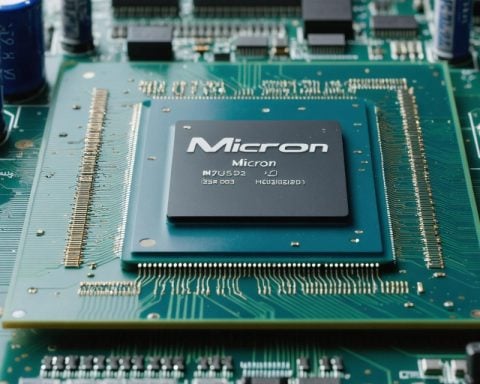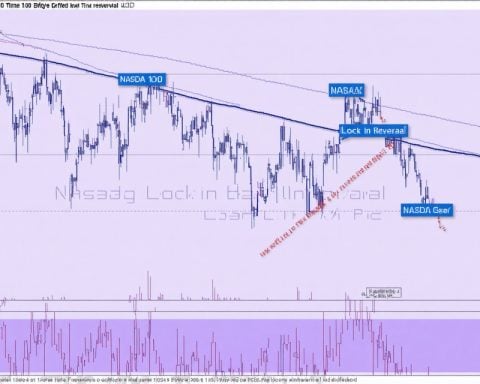- Honeywell International plans to spin off its advanced materials business by 2026, responding to activist investor pressures.
- The breakup could significantly boost share values, with projections suggesting a 54% to 84% increase by 2026, according to Elliott Investment Management.
- The separation aims to enhance the valuations of Honeywell’s core units: Aerospace and Automation, each focusing on unique growth strategies.
- Honeywell Aerospace plans to expand capacity and optimize supply chains, while the Automation unit prioritizes artificial intelligence and energy security.
- The company’s valuation is debated, with challenges posed by differing segment margins and revenue strategies compared to rivals like GE Aerospace.
- Success rests on effective management execution and improving earnings, necessitating patience and trust from investors.
A seismic shift is underway at Honeywell International. In a strategic move that has piqued the interest of investors and analysts alike, the industrial giant plans to break apart its conglomerate structure, launching its advanced materials business on an independent trajectory by 2026. This bold dismantling aligns with the persistent calls of activist investors who believe the company’s core units—automation and aerospace—would unleash greater value as standalone entities.
The air over Wall Street buzzes with intrigue following Honeywell’s announcement. Elliott Investment Management has championed the breakup, buoyed by projections of significant share value increases—potentially reaching a 54% to 84% surge by the end of 2026. Their calculus rests on a simple premise: that the market will embrace the decoupled entities with higher valuations, recognizing their unique growth prospects and operational dynamics.
CEO Vimal Kapur casts this plan as a response to diverging sector demands. Honeywell Aerospace targets expansive growth by bolstering capacity and revamping supply chains, while the Automation unit zeroes in on harnessing artificial intelligence and ensuring energy security. This focused strategy suggests a transformation that may enrich each segment’s trajectory.
Yet, is Honeywell truly undervalued, as some suggest? While comparisons to industry rivals indicate a favorable position, the disparity in segment margins and revenue streams with peers like TransDigm and GE Aerospace highlight challenges. Honeywell’s reliance on avionics and propulsion systems, unlike their rivals’ lucrative aftermarket revenues, presents hurdles that cannot be ignored.
The anticipated breakdown implies potential, but the journey isn’t merely about structure. Success hinges on management’s execution and ability to amplify earnings. For investors willing to embark on this expedition, patience and confidence in Honeywell’s leadership may yield their sought-after rewards.
The Untapped Potential of Honeywell’s Strategic Breakup: What You Need to Know
How-To Steps & Life Hacks: Navigating Honeywell’s Transformation
Understand the Strategy:
1. Research the Breakup: Start by familiarizing yourself with Honeywell’s current structure and the specific entities being separated: advanced materials, automation, and aerospace.
2. Follow Key Developments: Keep up with announcements and investor briefings for updates on the timeline and process leading to 2026.
3. Evaluate Financials: Understanding key financial metrics for each entity pre- and post-separation can highlight investment opportunities.
Invest Wisely:
– Diversify Potential Risks: Consider diversifying your investments across the separated units to mitigate risks associated with sector-specific downturns.
– Monitor Industry Trends: Each unit will operate in distinct markets. Keeping an eye on aerospace developments or AI advancements will be crucial.
Real-World Use Cases
– Aerospace: Honeywell Aerospace can significantly impact areas such as urban air mobility and defense technologies, leveraging its expertise in avionics and propulsion systems.
– Automation: The focus on AI and energy security can drive innovations in smart grid solutions and industrial automation, benefiting sectors like manufacturing and logistics.
Market Forecasts & Industry Trends
– Aerospace Growth: With increased global defense spending and commercial air travel resurgence post-COVID, Honeywell Aerospace stands to capitalize significantly, potentially outpacing industry growth rates (expected at around 3-4% annually).
– AI in Manufacturing: As the demand for AI-driven automation grows (the global AI market is projected to reach $190 billion by 2025), Honeywell’s automation unit is well-positioned for transformative growth.
Reviews & Comparisons
– Comparing to Industry Peers: Honeywell is often compared to companies like GE Aerospace and TransDigm. While Honeywell’s focus on avionics is less lucrative than aftermarket parts, its holistic approach can provide steady revenue from long-term contracts.
Controversies & Limitations
– Execution Risks: Skeptics point out that structural changes carry execution risks, where mismanagement could hamper growth rather than facilitate it.
– Dependence on Economic Conditions: The aerospace sector’s success is tightly linked to global travel and defense budgets, making it vulnerable to economic fluctuations.
Features, Specs & Pricing
– Each spun-off entity is expected to have tailored operational strategies, which will be detailed by 2026, including pricing models and rollout maps for products and services.
Security & Sustainability
– Sustainable Innovations: Honeywell is focusing on sustainable technologies, particularly in its materials and automation units, to address climate-change regulations and customer demand for greener solutions.
– Cybersecurity Measures: As automation and aerospace increasingly integrate AI, robust cybersecurity measures are paramount to protect proprietary data and ensure operational safety.
Insights & Predictions
– Potential Market Value Increases: Predictions suggest up to an 84% surge in stock value post-breakup, contingent on market conditions and smooth execution.
– Increased Innovation: With independent operations, each entity might see agility and focus leading to higher innovation rates in their respective domains.
Pros & Cons Overview
Pros:
– Potential for higher valuations of separated entities.
– Increased focus and operational efficiency.
Cons:
– Execution risk during the transition.
– Potential vulnerability to market volatility.
Actionable Recommendations
1. Continuous Monitoring: Stay informed by following Honeywell’s announcements and market analyses.
2. Investors’ Patience: Consider a long-term investment horizon to capitalize on potential stock value appreciation.
3. Stay Ahead of Trends: Research emerging trends in aerospace and automation to inform investment decisions.
For further insights and updates about Honeywell and its initiatives, consider visiting the Honeywell website.




















